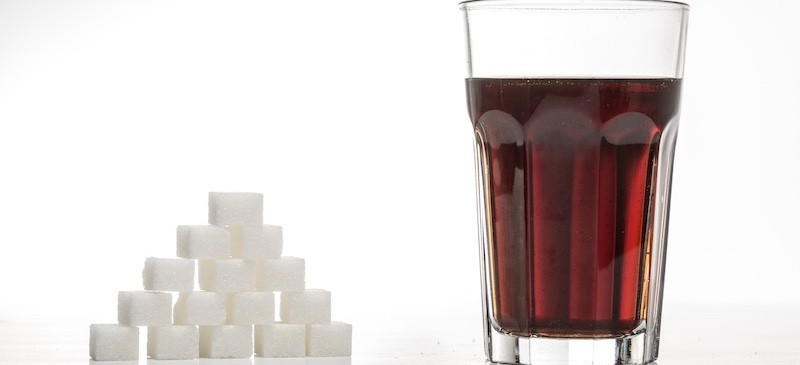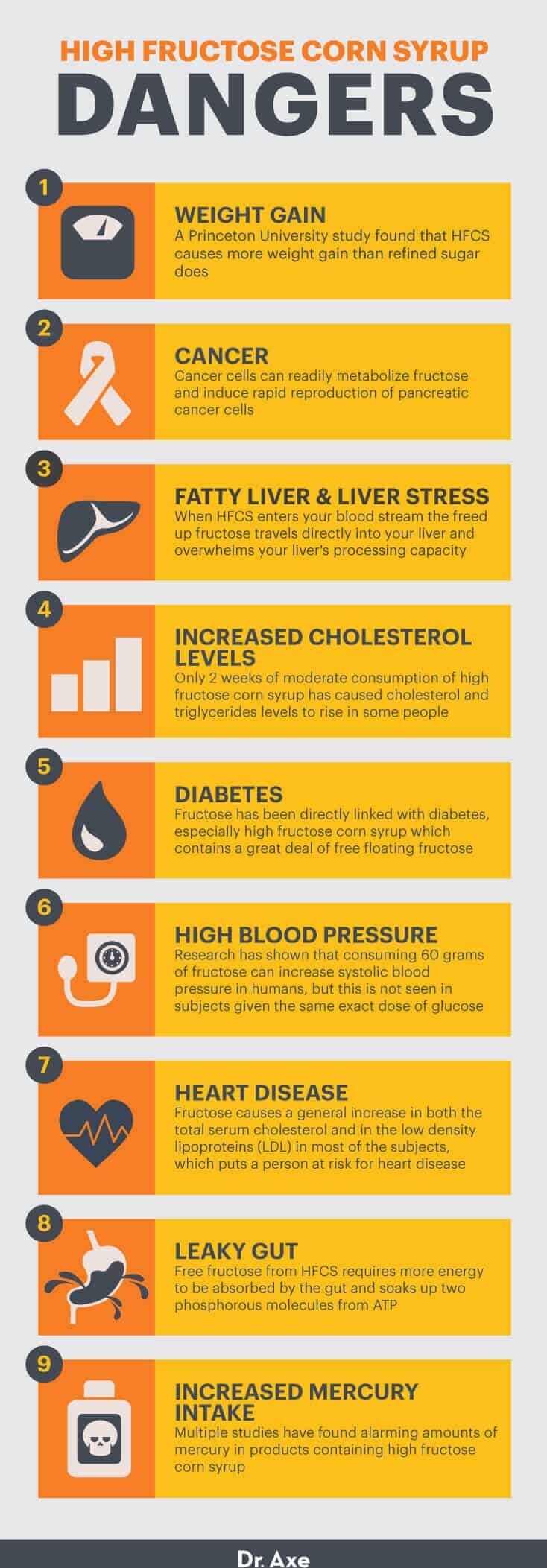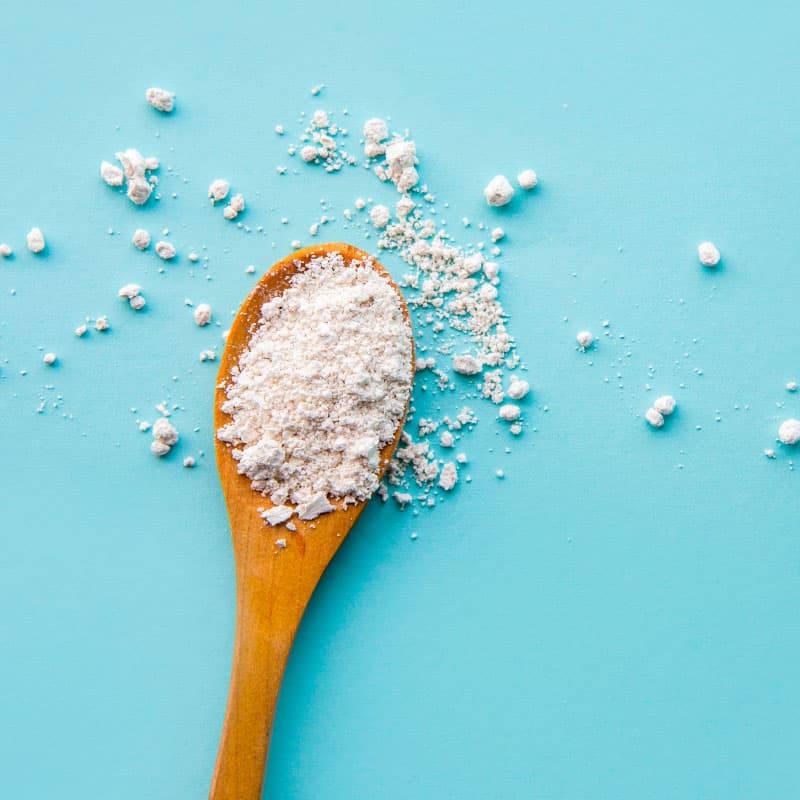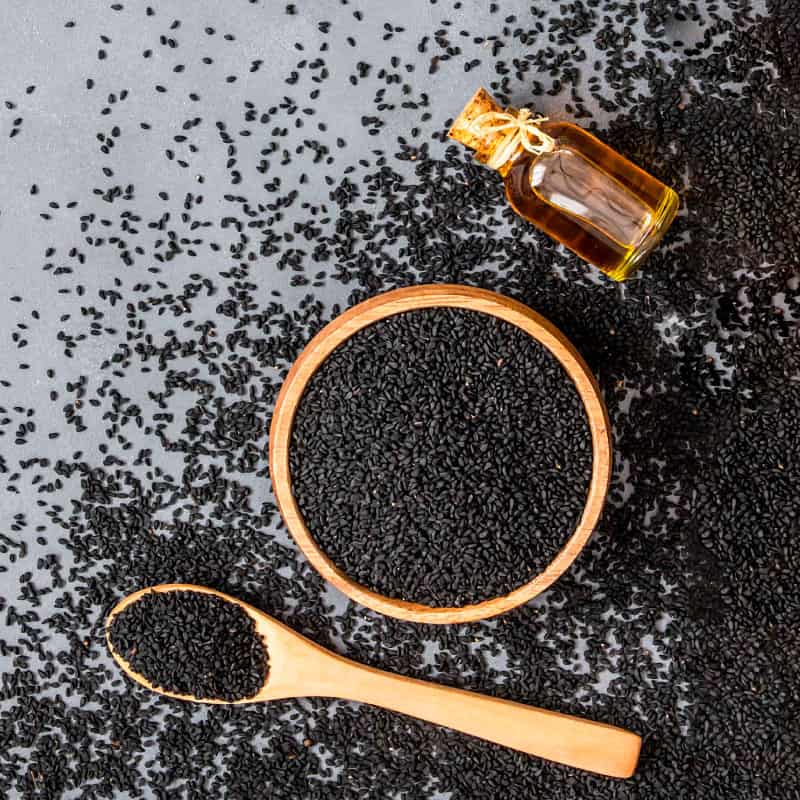This Dr. Axe content is medically reviewed or fact checked to ensure factually accurate information.
With strict editorial sourcing guidelines, we only link to academic research institutions, reputable media sites and, when research is available, medically peer-reviewed studies. Note that the numbers in parentheses (1, 2, etc.) are clickable links to these studies.
The information in our articles is NOT intended to replace a one-on-one relationship with a qualified health care professional and is not intended as medical advice.
This article is based on scientific evidence, written by experts and fact checked by our trained editorial staff. Note that the numbers in parentheses (1, 2, etc.) are clickable links to medically peer-reviewed studies.
Our team includes licensed nutritionists and dietitians, certified health education specialists, as well as certified strength and conditioning specialists, personal trainers and corrective exercise specialists. Our team aims to be not only thorough with its research, but also objective and unbiased.
The information in our articles is NOT intended to replace a one-on-one relationship with a qualified health care professional and is not intended as medical advice.
High Fructose Corn Syrup Dangers and Healthy Alternatives
December 9, 2024

Have you been fooled by advertisements talking about “corn sugar”? Viewer beware — this is just a more angelic but deceptive term for high fructose corn syrup (HFCS).
Manufactured mostly from genetically modified corn, high fructose corn syrup is definitely not natural and definitely not healthy.
Chances are all of us have consumed high fructose corn syrup at some point in our lives, whether knowingly or unknowingly. It’s hard to escape this questionable form of sugar that’s found in cereals, baked goods, ultra-processed foods, juices and sodas, among an array of other commonly consumed foods and drinks.
Farmers used to be subsidized to let their fields go unplanted and unharvested in order to boost the agricultural economy. Not anymore.
Today, they’re paid to overproduce, and that’s why HFCS and other corn-based products dominate grocery store shelves.
Why is high fructose corn syrup bad? The reasons are plentiful, but for starters, HFCS increases your risk of chronic and deadly health problems, including obesity, diabetes, hypertension and heart disease.
What is high fructose corn syrup?
You’ve probably heard of high fructose corn syrup, but what is it? Put simply, it’s a sweetener derived from cornstarch.
Cornstarch is composed of a chain of glucose (simple sugar) molecules joined together. Corn syrup, which is basically 100 percent glucose, comes from the breakdown of cornstarch into individual glucose molecules.
In order to create high fructose corn syrup, enzymes must be added to corn syrup to change some of the glucose into another simple sugar called fructose. The enzymes, alpha-amylase and glucoamylase, used in HFCS processing have been genetically modified to improve their heat stability for the production of HFCS.
According to the U.S. Food and Drug Administration, most high fructose corn syrups contain either 42 percent or 55 percent fructose. The rest of the HFCS is glucose and water.
HFCS 42 is typically what’s used in cereals, processed foods, baked goods and some beverages. HFCS 55 is used mainly in soft drinks. However, some HFCS contains up to 90 percent fructose.
High fructose corn syrup is also called glucose-fructose, isoglucose and glucose-fructose syrup.
Some people, especially the companies producing and using HFCS, like to say that it’s no different from regular sugar, but that’s just not true. HFCS contains more fructose than table sugar, which is a dangerous difference.
Author Bill Sanda reported for the Weston A. Price Foundation that in 1980 the average American ingested 39 pounds of fructose and 84 pounds of sucrose. By 1994, it was up to 66 pounds of sucrose and 83 pounds of fructose.
Today, approximately 25 percent of our caloric intake comes from sugars, the larger portion being fructose, according to Sanda.
There are so many reasons why high fructose corn syrup should be banned from our food supply. Here are some of the most highly disturbing high fructose corn syrup facts:
- Americans consume an average of roughly 45 to 50 grams of HFCS every day.
- HFCS represents more than 40 percent of caloric sweeteners added to foods and beverages, according to research, and is the sole caloric sweetener in soft drinks in the U.S.
- HFCS has been shown to increase the risk of developing high blood pressure, diabetes and heart disease.
- Consumption of HFCS increased more than 1,000 percent between 1970 and 1990, far exceeding the intake changes of any other food or food group, and is a main factor in our current obesity epidemic.
- HFCS can help lead to leaky gut syndrome.
- HFCS contains up to 0.57 micrograms of health-hazardous mercury per gram.
- HFCS has been shown to promote cancer.
- The average 20-ounce soda has 16 teaspoons of sugar, all of it high fructose corn syrup.
Dangers
1. Weight gain
There is a lot of debate over high fructose corn syrup vs. cane sugar. Regardless of which you choose, there is a mountain of evidence that links sugar consumption to weight gain and obesity.
For instance, results from the Coronary Artery Risk Development in Young Adults study, a 30-year study that evaluated added sugar intake and its effects on weight gain in adults who were aged 18–30 at the beginning of the study in 1985-86, revealed that added sugar intake — including HFCS — was associated with more weight gain, increased waist circumference and elevated risk of of obesity.
As for high fructose corn syrup in particular, researchers have noted that the obesity epidemic in America coincided with the 1,000 percent increase in HFCS consumption between 1970 and 1990. It’s believed that since fructose doesn’t stimulate insulin secretion or increase leptin production, it can lead to consuming more calories.
This is because insulin and leptin help signal to the body that it’s full. Thus, consuming more HFCS can also lead to consuming more calories, leading to more weight gain.
2. Cancer
With high fructose corn syrup found in so many foods and beverages, it’s no surprise that fructose intake has increased dramatically in recent decades. Research has found that the fructose in HFCS promotes cancer growth, and it’s believed to contribute to the Warburg effect for cancer growth.
One study actually found that cancer cells can readily metabolize fructose and induce rapid reproduction of pancreatic cancer cells. Researchers also found that fructose and glucose metabolism are very different, with fructose causing more negative health reactions than glucose.
This research provides very good reason why cancer patients should not be given anything containing high fructose corn syrup and how avoiding HFCS can possibly disrupt cancer growth. When it comes to cancer prevention and treatment, clearly HFCS is an ingredient that should be aggressively avoided.
3. Fatty liver and liver stress
Fructose is known to stimulate fat accumulation in the liver by increasing fat synthesis yet blocking fat breakdown.
In order to chemically create high fructose corn syrup, glucose and fructose, which are naturally linked together, become separated. When HFCS enters your bloodstream, the freed-up fructose travels directly into your liver and overwhelms your liver’s processing capacity.
This then causes unhealthy fat production in your liver called lipogenesis. This can lead to fatty liver disease if more than 5 percent to 10 percent of the liver’s weight becomes fat.
It doesn’t stop there, though. Having a fatty liver can lead to serious liver stress, liver damage, obesity, prediabetes and type 2 diabetes.
In a six-month randomized intervention study, drinking sucrose-sweetened soft drinks — which often contain HFCS as well — daily led to increased liver fat, along with increases in skeletal muscle fat, visceral fat, triglycerides and cholesterol compared to milk, diet cola and water consumption.
This led the researchers to conclude that drinking sugar-sweetened beverages daily likely increases the risk of cardiovascular and metabolic diseases.
4. Increased cholesterol levels
High fructose corn syrup intake is linked to high cholesterol levels. A study published in the American Journal of Clinical Nutrition found that only two weeks of moderate consumption of high fructose corn syrup caused triglycerides and cholesterol levels to rise.
The study split 85 people with generally healthy lipid profiles into four groups. The first three groups consumed drinks sweetened with either 25 percent, 17.5 percent or 10 percent high fructose corn syrup while the fourth group drank something sweetened only with aspartame.
The results showed that LDL or “bad” cholesterol for the aspartame group remained the same before and after the diet. However, for subjects who consumed HFCS-sweetened beverages for two weeks, the results were as follows: The 10 percent group on average went to LDL of 102 from 95, the 17.5 percent to 102 from 93 and the 25 percent group to 107 from 91.
The lead author of the study, Kimber L. Stanhope, a research scientist at the University of California, Davis said, “It was a surprise that adding as little as the equivalent of a half-can of soda at breakfast, lunch and dinner was enough to produce significant increases in risk factors for cardiovascular disease. Our bodies respond to a relatively small increase in sugar, and that’s important information.”

5. Diabetes
A lot of medical professionals think that fructose is better for diabetics than sugar, but every cell in the body can metabolize glucose. Fructose, on the other hand, must be metabolized by the liver, and it has been linked with diabetes, especially high fructose corn syrup, which contains a great deal of free-floating fructose.
Unlike fruit, which contains fructose yet also has fiber and nutrients to positively affect fructose’s absorption by the body, high fructose corn syrup offers absolutely zero nutritional value. It’s just straight-up questionable sugar and calories, nothing else.
Recent data suggested that fructose consumption in humans leads to increased visceral fat accumulation, impairment in the regulation of fats in the blood (like cholesterol and triglycerides) and decreased insulin sensitivity.
Why are these effects of fructose so concerning? All of these side effects have been associated with an increased risk of developing type 2 diabetes as well as cardiovascular disease.
A study published in the journal Global Health showed that countries that mix high fructose corn syrup into processed foods and drinks have higher rates of diabetes than countries that don’t use HFCS. Out of the 43 countries studied, approximately half had little or no high fructose corn syrup in their food supplies.
In the other countries, the HFCS content of foods was between about one pound a year per person in Germany to about 55 pounds each year per person in the U.S.
The study found that countries using HFCS had diabetes rates about 20 percent higher than HFCS-free countries.
6. High blood pressure
Fructose intake from added sugars is associated with high blood pressure levels in humans. The goal of a 2012 study published in Metabolism was to compare the effects of soft drinks sweetened with high fructose corn syrup vs. sucrose (table sugar).
In a randomized study, researchers had 40 men and women consume 24 ounces of either a HFCS- or sucrose-sweetened beverage. They then collected urine and blood samples over the next six hours to measure blood pressure, heart rate, fructose and several other metabolic biomarkers.
The researchers found that systolic blood pressure maximum levels were higher when HFCS-sweetened beverages were consumed compared to sucrose-sweetened beverages. Overall, they found that compared with sugar, high fructose corn syrup leads to greater fructose exposure to the entire body and significantly different acute metabolic effects.
Research has shown that consuming 60 grams of fructose can increase systolic blood pressure in humans, but this is not seen in subjects given the same exact dose of glucose. In another study, overweight men were given 200 grams of fructose daily for two weeks, and it was observed that they maintained a significant rise in ambulatory blood pressure (blood pressure as you move around) during that time.
Hypertension in response to fructose intake appears to be brought about by increased sodium absorption in the intestine, inhibition of systemic blood vessel function and stimulation of the sympathetic nervous system. Fructose-induced increases in uric acid levels in the body may likely play a part as well.
7. Heart disease
The fact that HFCS raises blood pressure is reason enough to make it extremely bad for your heart. High blood pressure is part of a cluster of dangerous health issues called metabolic syndrome, which increases your risk for heart disease, stroke and diabetes.
Research has shown that in subjects who had healthy glucose tolerance and those who had unhealthy glucose tolerance, fructose caused a general increase in both the total serum cholesterol and in the low density lipoproteins (LDL) in most of the subjects, which puts a person at risk for coronary heart disease.
According to a 15-year Harvard study, participants who took in 25 percent or more of their daily calories as sugar were more than twice as likely to die from heart disease as those whose diets included less than 10 percent added sugar.
This sugar intake could be from HFCS or from another source of sugar, but it’s why we need to eliminate HFCS from our diets and keep overall sugar intake, even from truly natural sources, at a healthy, low level.
8. Leaky gut syndrome
Leaky gut syndrome is also referred to as increased intestinal permeability. When you have this condition, the “net” in your digestive tract gets damaged, which allows proteins (like gluten), bad bacteria and undigested particles to pass into your bloodstream.
Research done at the Children’s Hospital Oakland Research Institute found that free fructose from HFCS requires more energy to be absorbed by the gut and soaks up two phosphorous molecules from ATP (our body’s energy source). This depletes the energy fuel source in our guts required to maintain the integrity of our intestinal linings.
Large doses of free fructose have been shown to literally punch holes in the intestinal lining, creating a leaky gut.
Once these holes in the lining exist, it’s very easy for unwanted toxins and food to enter your bloodstream. These invaders are not meant to be in the bloodstream so they trigger inflammation in the body.
Inflammation is at the root of so many health problems, including obesity, diabetes, cancer, heart disease, dementia and accelerated aging.
9. Increased mercury intake
Multiple studies have found alarming amounts of mercury in products containing high fructose corn syrup, which can contribute to dangerous mercury poisoning.
We know that mercury is extremely toxic to our bodies, and it’s especially disturbing for a developing child to be exposed to mercury. Mercury has negative effects on the liver, kidneys, brain and other internal organs.
In a study published in Environmental Health, mercury was detected in almost 50 percent of samples of commercial high fructose corn syrup.
Another highly concerning study by the Institute for Agriculture and Trade Policy found mercury in about a third of 55 popular brand name food and beverage products. These common products all had HFCS as the first or second highest labeled ingredients.
HFCS vs. other sweeteners
No matter the source of sugar, you always should watch that your overall intake of sugar isn’t too high, but the question continues: Is HFCS more of a health risk than other sweeteners?
To help answer this question, let’s break down the main differences and similarities between the various sweeteners out there. What makes them good, and what makes them bad?
High fructose corn syrup
- To create HFCS, caustic soda is used to shuck the corn kernel from its starch, and corn syrup is then created. Enzymes (commonly GMO) are introduced to convert the corn syrup’s sugars to super-sweet fructose.
- The alpha-amylase and glucoamylase used in HFCS processing have been genetically modified to improve their heat stability for the production of HFCS.
- HFCS contains no enzymes, vitamins or minerals, only sugar and calories.
- Since HFCS is produced from corn, a natural vegetable, some people try to say that it’s a natural sugar, but there is so much processing that goes on to produce and chemically alter corn to make it into HFCS that it’s far from natural. Plus, so much of the corn today isn’t even natural itself because it’s being genetically modified by growers for bigger crop yields and more money.
- HFCS’s flavor is similar to sugar, but HFCS is sweeter and cheaper.
- Researchers who measured the relative sweetness of natural and artificial sweeteners found HFCS to be 1.5 times sweeter than table sugar.
- HFCS is metabolized to fat in your body far more rapidly than any other sugar.
- Unlike sugar, you’ll never see HFCS in the supermarket because it’s only available to food processors.
Corn syrup
- Corn syrup is primarily made from the cornstarch of yellow No. 2 dent corn that’s converted to a syrup using sulfur dioxide, hydrochloric acid or various enzymes, and water.
- Cornstarch is converted into ordinary corn syrup through a process called acid hydrolysis.
- Ordinary corn syrup contains dextrose sugar, which is about three-quarters as sweet as the sucrose sugar in cane or beet sugar.
- High fructose corn syrup takes corn syrup and makes it even more processed and health-hazardous due to HFCS’s resulting high fructose content.
Agave
- While it’s marketed and consumed today as a “natural” sweetener,” agave nectar or agave syrup is basically high fructose corn syrup masquerading as a health food. According to Dr. Jonny Bowden, “Research shows that it’s the fructose part of sweeteners that’s the most dangerous. Fructose causes insulin resistance and significantly raises triglycerides (a risk factor for heart disease). It also increases fat around the middle which in turn puts you at greater risk for diabetes, heart disease and metabolic syndrome (AKA prediabetes).”
- There is a debate in natural health and medical circles whether or not the health claims by manufacturers are true, making agave quite controversial.
- It’s about 1.5 times sweeter than regular sugar and contains roughly 60 calories per tablespoon, which is about 20 calories more than the same amount of table sugar.
- Agave nectar is supposedly lower on the glycemic index (a number that represents the effect a particular food has on someone’s blood sugar), but these claims don’t seem to be founded on sound science.
- Even if agave nectar has a low glycemic index, it’s largely made of fructose, the single most damaging form of sugar.
- It has the highest fructose content of any commercial sweetener on the market.
- Compared to the 1:1 fructose/glucose ratio of sugar and high fructose corn syrup, agave nearly has a whopping 2:1 ratio.
Sugar
- Both sugar and HFCS begin out in the field — sugar as sugarcane or the sugar beet and high fructose corn syrup as corn.
- Common white sugar or table sugar comes from sugarcane that undergoes washing and separation that produces naturally white crystals that are 99.9 percent sucrose. Raw sugar is less processed and contains 96 percent sucrose and 4 percent of plant materials contained in the mother liquid.
- The fructose in HFCS is a monosaccharide or single sugar molecule while sugar’s sucrose consists of one molecule of glucose linked with one molecule of fructose.
- HFCS’s fructose can be directly absorbed through your small intestine into your blood while sucrose must be broken down into glucose plus fructose by an enzyme called sucrase present in the walls of your small intestine before the two resulting sugars are absorbed into your blood.
- Extra calories from sucrose- and fructose-sweetened foods can both increase fat accumulation in your blood, liver and fatty tissues, which increases your risk for developing diabetes and heart disease.
- Sucanat is a sugar product that comes from dehydrated sugarcane juice and retains all of the nutrients found in natural sugarcane juice, including iron, calcium, vitamin B6 and potassium.
- Brown sugar has molasses added into it, and it contains calcium, potassium, iron and magnesium while white sugar contains none of these.
- White sugar and HFCS both provide empty, nutrition-less calories.
Natural sweeteners (minus agave)
- Raw honey is a great example of a natural sweetener that not only sweetens, but is a true superfood with awesome health benefits. Even though it contains fructose, it’s also loaded with enzymes, antioxidants, iron, zinc, potassium, calcium, phosphorus, vitamin B6, riboflavin and niacin. Together, these essential nutrients help neutralize free radicals while promoting the growth of healthy bacteria in the digestive tract.
- Stevia is native to South America and has been used for hundreds of years in that region to support healthy blood sugar levels and prompt weight loss.
- Fruits like dates and bananas make excellent sweeteners. While they do contain naturally occurring fructose, they also contain fiber, vitamins and minerals that make their processing in the body a lot more healthy than the fructose in HFCS or corn syrup. When the sugar in fruit is consumed, it doesn’t exhibit the same negative biological effects as the free high fructose doses found in corn sugars.
- Even natural sweeteners need to be used in moderation because even natural sugars raise your blood sugar, and high blood sugar levels lead to all kinds of health problems, including diabetes.
- In moderation, natural sugars, like those from fruit, have proven health benefits for those of us who don’t already have blood sugar problems.
Best alternatives
Some of the best alternatives to HFCS include truly natural sweeteners like raw honey and maple syrup. When you’re reading ingredient labels, look for these natural sweeteners, and steer clear of anything that contains high fructose corn syrup.
These are some sugar substitutes and HFCS alternatives to use instead:
- Raw honey
- Stevia
- Dates
- Coconut sugar
- Maple syrup
- Blackstrap molasses
- Balsamic glaze
- Banana puree
- Brown rice syrup
- Real fruit jam
Final thoughts
- Avoid any products containing high fructose corn syrup or added fructose, which have many negative health effects on the body.
- Fruit juice, even the unsweetened variety, naturally contains fructose and should be consumed in very small quantities. Eating a whole fruit with its blood sugar-balancing fiber is a much better option than juice.
- A big way to avoid high fructose corn syrup is to completely remove ultra-processed foods from your diet.
- Another great way is to avoid all sweetened soft drinks. The average soda contains toxic levels of HFCS.
- Opt for naturally carbonated mineral water, herbal tea or green tea instead, but stick to home brews since the majority of commercially bottled iced teas are also loaded with HFCS.
- Overall, you want to keep your sugar intake low no matter whether the source is natural, “natural” or man-made.
- High fructose corn syrup definitely tops the list of health-hazardous ingredients to avoid as much as humanly possible.






